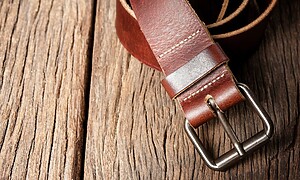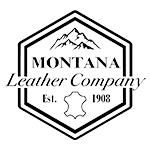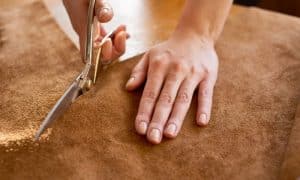Because of how versatile leather is, leather work can easily become a lifelong hobby for those who enjoy working with their hands. However, with how many leather working tools there are, it can be a bit intimidating for newcomers to get into the craft. Allow us to provide you with a simple guide to leather crafting tools for beginners. This will outline the most important tools you need when starting out.
Like any good guide to leather crafting tools, beginners will always start with their cutting tools. Utility knives, precision knives, and rotary cutters are the most popular cutting tools among leatherworkers. This array of tools offers you the versatility to handle larger cuts with the rotary cutter and finer details with a precision knife.
Most importantly, however, is a cutting mat for you to work on. These will help protect your table as you work. Self-healing mats are a good choice because they can withstand most cutting tools. Additionally, many cutting mats are designed with rulers and straight edges for your convenience.
Scratch Awl
Scratch awls are simple but invaluable. Available in a variety of shapes and sizes, scratch awls are used to punch holes or create scratch lines for stitching and tooling guidance. They’re also a handy assistant for getting your needle and thread through a stitch hole that is tight or difficult to get through.
Hole Punch
While scratch awls are capable of punching holes, a proper hole punch is necessary for setting hardware and creating consistently perfect holes. Hole punches can be used for various applications, such as creating decorative designs or belting and lacing holes. As such, a hole punch will always be handy to have at the ready.
Stitching Needle and Thread
We’ve mentioned a needle and thread, but what kind do you need? A tripoint glover’s needle is made specifically for piercing thick and heavy materials like leather, so it’s a reliable choice for beginners. A harness needle is used when holes are pre-punched for the needle to go through. As for thread, waxed or bonded nylon is preferred because they slide through the leather with little resistance.
Edge Beveler
An edge beveler will be helpful for removing hard corners and edges to give your leather products a more polished look. It will give even your most basic work a more rounded and higher quality appearance, as rough edges make a product look shoddy and undesirable.
Mallet
A mallet—not a hammer—is almost always necessary for setting hardware. Leather tooling and stamping require a mallet to help you pierce through and work leather, but you don’t want to damage your equipment by using a metal hammer.
These leather tools will help you make your first confident steps into the leather working world. And of course, if you ever have questions, we at Montana Leather Company are always happy to assist.



